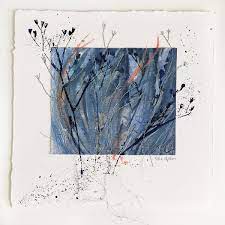The Beauty of Textile Artwork
Textile artwork is a captivating form of artistic expression that combines the tactile nature of fabrics with the creativity of visual art. From intricate tapestries to delicate embroidery, textile art offers a unique and versatile medium for artists to explore themes, emotions, and narratives.
One of the most fascinating aspects of textile artwork is the rich history and cultural significance behind different techniques and styles. Across various cultures and time periods, textiles have been used not only for practical purposes but also as a means of storytelling and self-expression.
Embroidery, for example, has long been cherished for its intricate beauty and attention to detail. From traditional hand-stitched designs to contemporary mixed-media creations, embroidery allows artists to play with texture, colour, and pattern in ways that are both visually stunning and deeply meaningful.
Similarly, quilting is another beloved form of textile art that has evolved over centuries. Quilts not only serve as functional items for warmth and comfort but also as works of art that reflect the creativity and craftsmanship of their makers. Each quilt tells a unique story through its design, stitching patterns, and choice of fabrics.
Textile artists today continue to push boundaries and explore new possibilities in this dynamic medium. Mixed-media textile art combines traditional techniques with modern materials to create innovative pieces that challenge perceptions and ignite the imagination.
Whether you are drawn to the intricate beauty of embroidery, the warmth of quilting, or the experimental nature of mixed-media textile art, there is something truly special about the way textiles can evoke emotion, provoke thought, and inspire creativity.
Next time you encounter a piece of textile artwork, take a moment to appreciate the skill, passion, and creativity that went into creating it. Let yourself be transported by the beauty of fabric transformed into art—a testament to the enduring allure of textile artwork.
Key Features of Textile Art Explained
An Introduction to Textile Painting
4. Understanding the Essence of Textile Art
- What are the techniques of textile art?
- What are the features of textile art?
- What is textile painting?
- What is a textile art?
What are the techniques of textile art?
Textile art encompasses a wide range of techniques that allow artists to manipulate fabrics and fibres in creative and expressive ways. Some common techniques in textile art include embroidery, weaving, quilting, felting, appliqué, and dyeing. Embroidery involves stitching designs onto fabric using various types of threads and stitches to create intricate patterns and textures. Weaving combines different yarns to create fabric through interlacing threads on a loom, resulting in unique patterns and textures. Quilting involves sewing together layers of fabric with padding in between to create decorative designs and textures. Felting uses wool fibres that are matted together through agitation to form a solid fabric or sculptural shapes. Appliqué involves attaching pieces of fabric onto a base fabric to create designs or patterns. Dyeing is the process of adding colour to fabrics using different dyes and techniques such as tie-dyeing or batik. These techniques showcase the versatility and creativity that textile artists can explore to bring their visions to life in captivating ways.
What are the features of textile art?
Textile art encompasses a wide array of features that distinguish it as a unique and captivating form of artistic expression. One key feature of textile art is its tactile nature, inviting viewers to not only appreciate the visual aesthetics but also to engage with the textures and materials used in creating the artwork. Another defining characteristic is the versatility of textiles, allowing artists to experiment with a diverse range of fabrics, threads, and embellishments to convey their artistic vision. Additionally, the intricate techniques employed in textile art, such as embroidery, quilting, and weaving, showcase the skill and craftsmanship involved in crafting each piece. Overall, the features of textile art combine to create a rich tapestry of creativity that celebrates tradition, innovation, and storytelling through fabric and thread.
What is textile painting?
Textile painting is a captivating technique within the realm of textile art that involves applying paints or dyes directly onto fabric surfaces to create unique and visually striking designs. Unlike traditional painting on canvas or paper, textile painting allows artists to explore a different dimension of creativity by incorporating the texture and flexibility of fabrics into their artwork. This versatile medium offers endless possibilities for experimenting with colours, patterns, and textures, resulting in vibrant and dynamic pieces that blur the boundaries between fine art and craft. Textile painting can range from delicate watercolour-like effects to bold, abstract compositions, making it a popular choice for artists seeking to add depth and richness to their artistic practice through the tactile beauty of textiles.
What is a textile art?
Textile art encompasses a diverse range of creative practices that involve the manipulation of fabrics and fibres to create visually engaging and conceptually rich artworks. From traditional techniques such as weaving, knitting, and embroidery to contemporary approaches like textile sculpture and installation art, textile art explores the intersection of craft, design, and fine art. At its core, textile art celebrates the inherent qualities of textiles—such as texture, colour, pattern, and tactility—while offering artists a versatile medium through which to convey personal narratives, social commentary, and aesthetic explorations. Through the skilful blending of traditional craftsmanship with innovative processes, textile art continues to captivate audiences with its unique ability to evoke emotion, provoke thought, and push the boundaries of artistic expression.

